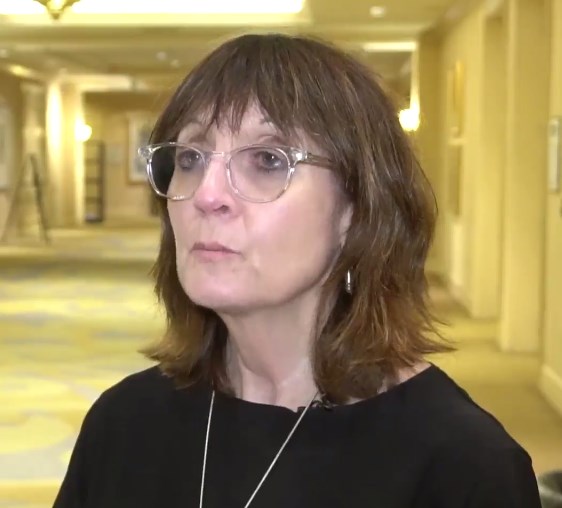User login
SAN DIEGO – Earlier this month, an article in Lancet Psychiatry reported the results of a prospective, randomized, sham-controlled trial that tested deep brain stimulation of the Brodmann area 25 within the subcallosal cingulate white matter in 90 patients with treatment-resistant depression. Unfortunately, the study showed no significant benefit at 6 months.
The approach had shown promise in some previous open-label studies, which prompted the multicenter trial (Lancet Psychiatry. 2017 Oct 4. doi: 10.1016/S2215-0366(17)30371-1).
Although the 6-month results were disappointing, the open-label phase of the study told a different story. At 2 years, 48% of patients in the stimulation group achieved an antidepressant response, higher than what would be expected from treatment as usual in this difficult population.
In this video interview at the annual meeting of the American Neurological Association, Helen Mayberg, MD, one of the study authors and professor of psychiatry, neurology, and radiology at Emory University, Atlanta, discusses these long-term results and their implications, as well as lessons learned and how they might inform future research.
SAN DIEGO – Earlier this month, an article in Lancet Psychiatry reported the results of a prospective, randomized, sham-controlled trial that tested deep brain stimulation of the Brodmann area 25 within the subcallosal cingulate white matter in 90 patients with treatment-resistant depression. Unfortunately, the study showed no significant benefit at 6 months.
The approach had shown promise in some previous open-label studies, which prompted the multicenter trial (Lancet Psychiatry. 2017 Oct 4. doi: 10.1016/S2215-0366(17)30371-1).
Although the 6-month results were disappointing, the open-label phase of the study told a different story. At 2 years, 48% of patients in the stimulation group achieved an antidepressant response, higher than what would be expected from treatment as usual in this difficult population.
In this video interview at the annual meeting of the American Neurological Association, Helen Mayberg, MD, one of the study authors and professor of psychiatry, neurology, and radiology at Emory University, Atlanta, discusses these long-term results and their implications, as well as lessons learned and how they might inform future research.
SAN DIEGO – Earlier this month, an article in Lancet Psychiatry reported the results of a prospective, randomized, sham-controlled trial that tested deep brain stimulation of the Brodmann area 25 within the subcallosal cingulate white matter in 90 patients with treatment-resistant depression. Unfortunately, the study showed no significant benefit at 6 months.
The approach had shown promise in some previous open-label studies, which prompted the multicenter trial (Lancet Psychiatry. 2017 Oct 4. doi: 10.1016/S2215-0366(17)30371-1).
Although the 6-month results were disappointing, the open-label phase of the study told a different story. At 2 years, 48% of patients in the stimulation group achieved an antidepressant response, higher than what would be expected from treatment as usual in this difficult population.
In this video interview at the annual meeting of the American Neurological Association, Helen Mayberg, MD, one of the study authors and professor of psychiatry, neurology, and radiology at Emory University, Atlanta, discusses these long-term results and their implications, as well as lessons learned and how they might inform future research.
AT ANA 2017
